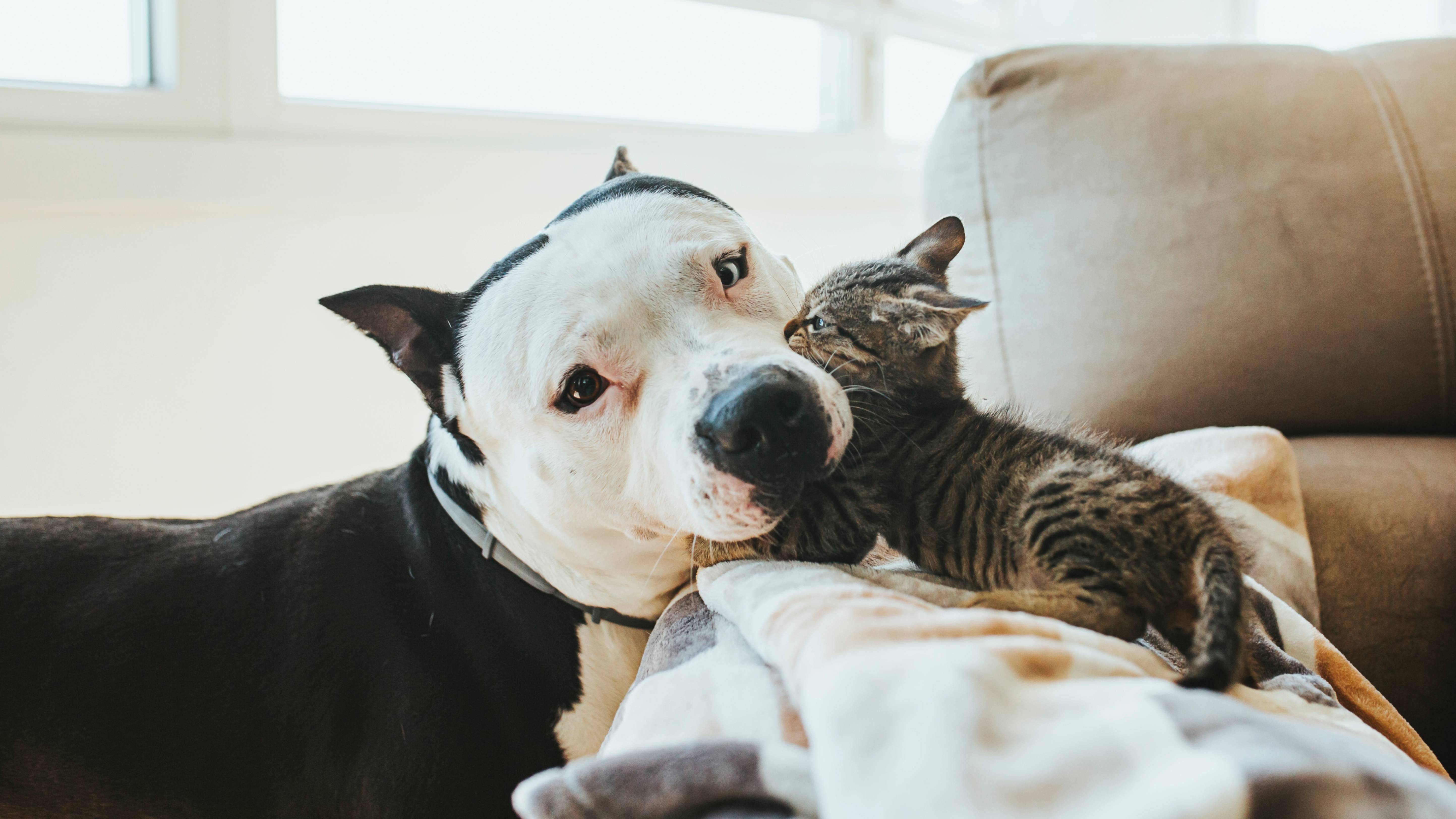
I love having two cats in the family. Our four-year-old feline, Roxy, and our six-month-old kitten, Teddy, bring so much joy to our lives and I can't imagine our home without both of them in it.
But that doesn't mean it's always easy. Whether it's dogs and cats living together or pets of the same species, having more than one fur friend can be challenging.
While it's true that some animals will bond instantly and be firm friends for life, more often than not, the best outcome we're able to achieve is that they learn to tolerate each other.
I've spent a lot of time trying to figure out how to keep the peace in a multi-cat household, and for the most part, Roxy and Teddy co-habit without too many issues – but I'm still working on things with them and it does take time.
Although the below tips are ones I've picked up trying to create harmony between two cats, I believe they're equally applicable regardless of whether you have dogs, cats or both. So, without further ado, here's how to keep your home calm when you have multiple pets....
32 tips for living in a multi-pet household
1. Introduce pets slowly

When it comes to how to introduce a kitten to a cat or how to introduce a new dog to your home and other pets, I can't stress enough the importance of going slowly. As humans, our instinct is to want to rush the introductions so we can all get on with living together, but this can majorly backfire. Although it was inconvenient at times having to keep Roxy and Teddy in separate areas for as long as we did, introducing them slowly over the course of two months has really paid off.
I highly recommend starting with keeping the new pet in a room of its own and letting your current pet have access to the rest of the house. After a few days, do a scent swap where you give your old pet a blanket or item belonging to your new pet and vice versa to help them get used to each other's scent. From there, you can progress to letting them meet through a baby gate or other screen, so they can see each other but not interact. If that goes well, progress to face-to-face meetings but monitor them for any signs of stress or aggression.
Once they get to the point where they can interact without any issues, you can allow both pets to roam about the house freely.
2. Have a stable routine

You'd be surprised how much a stable routine can help support your pets during times of change. Because you're bringing a new pet into your home, you want to try to keep all other aspects of your old pet's day-to-day life the same. That means feeding them at the same time, exercising or playing with them at the same time, grooming them when you usually would, and ensuring their sleep routine stays consistent. It sounds simple, but it can be super helpful in supporting your fur friend's nervous system and preventing conflicts from breaking out.
Here’s some more info about the importance of cat routines.
3. Set aside time for each pet

When we welcomed Teddy into our family, I made sure that Roxy still got a lot of attention and time alone with me. I played with her like I usually would and spent quality time brushing her each day just as I had before Teddy arrived.
When it comes to ways to bond with your cat or dog when a new pet arrives, one-on-one time is so important. It's easy to sideline existing pets when a cute new kitten or puppy arrives on the scene, so try to keep in mind that your old feline friend or canine companion needs your love and attention now more than ever.
4. Play with your pets separately
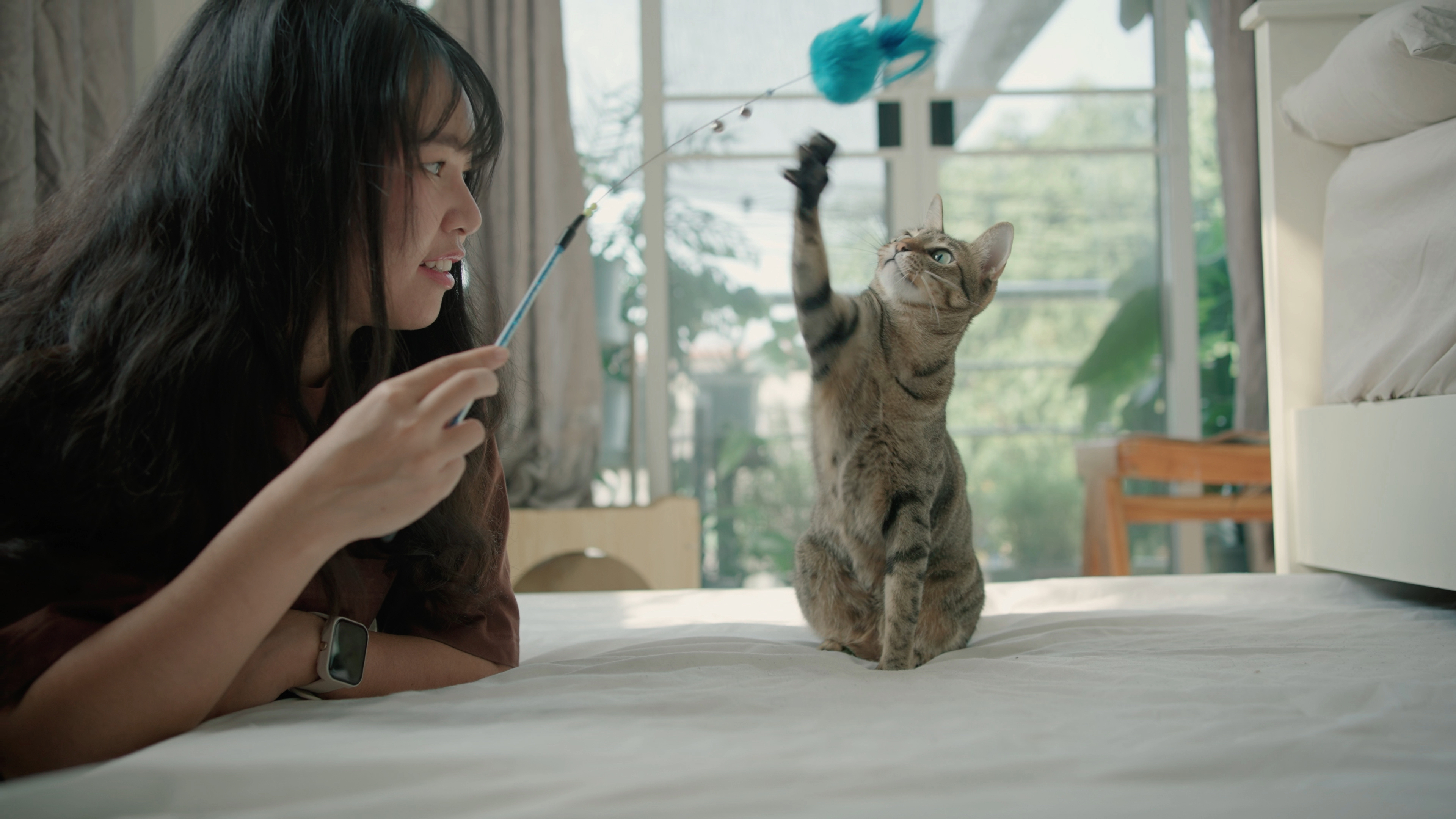
Whether it's a game of fetch with one of the best dog toys or watching your kitty zoom about after an interactive cat toy, spending time playing with each pet individually can be a great way to deepen your connection. When we first got Teddy, I tried to play with her and Roxy at the same time, but I found that Teddy (having a lot of kitten energy to burn) would take over every single game and Roxy would stop playing and go and sit in a corner. Roxy is much happier now that I play with her alone – it gives her a chance to relax and enjoy playtime without fear of Teddy muscling in.
5. Spend time with both pets together

As well as spending solo time with each of your pets, you'll want to bring them together at times to help them develop a relationship with each other. You might like to try a joint play session – whether that's a physical game or giving them a mental workout with a cat puzzle feeder or dog puzzle toy.
6. Ensure they have their own toys

Animals will naturally fight over resources – they're sort of like humans in that respect. Roxy and Teddy had a bit of a scuffle the other day when Roxy decided to play with a little toy we'd given Teddy when she first joined our family. It brought her a lot of comfort during her first few weeks with us and it's remained one of her favorite items, so she was not overly pleased to find it in Roxy's possession. This sort of thing will happen from time to time but you can minimize the likelihood of fights over toys by making sure each pet has their own special toy to play with.
7. Have multiple spaces they can retreat to

One of the best things you can do to ensure harmony reigns supreme in your house is to create multiple cozy spaces that your pets can retreat to. We purchased one of the best cat trees for Roxy earlier this year and she absolutely loves it. It's small (a hammock supported by two scratching posts) but she's taken to it like a duck to water and when we learned that it was going to be a firm favorite with Teddy, too, we made sure to buy another one.
Alongside their hammocks, they also have multiple other quiet spaces in the house they can use, which reduces the likelihood of fights breaking out. The more hideaway options your pets have, the happier they'll be.
8. Train your pets separately

Whether you're training your dog or training your cat, you want to make sure you do this separately. Having other pets present during training sessions can be a huge distraction that stops your fur friend from learning what is you're trying to teach them. Yes, you can train them together as well but only after each pet has individually mastered the behavior or skill you're wanting them to learn.
9. Create a cozy space in a crate

Regardless of whether you have a feline friend or a canine companion, the best dog crates can come in handy when you have multiple pets in your home. When furnished with a cozy bed and blanket plus a familiar toy or two, they can be used as a place where your pet can get some undisturbed rest.
10. Have multiple litter boxes

Whether you choose to invest in one of the best automatic cat litter boxes that does the messy cleaning up for you or a more traditional version, if you have more than one feline in your family you'll need multiple litter boxes. Cats don't like doing their business where another cat has been, so by having several litter boxes in your house you can prevent unwanted behavioral issues, such as having your kitty toilet in other parts of your home.
11. Feed them separately...or at a distance
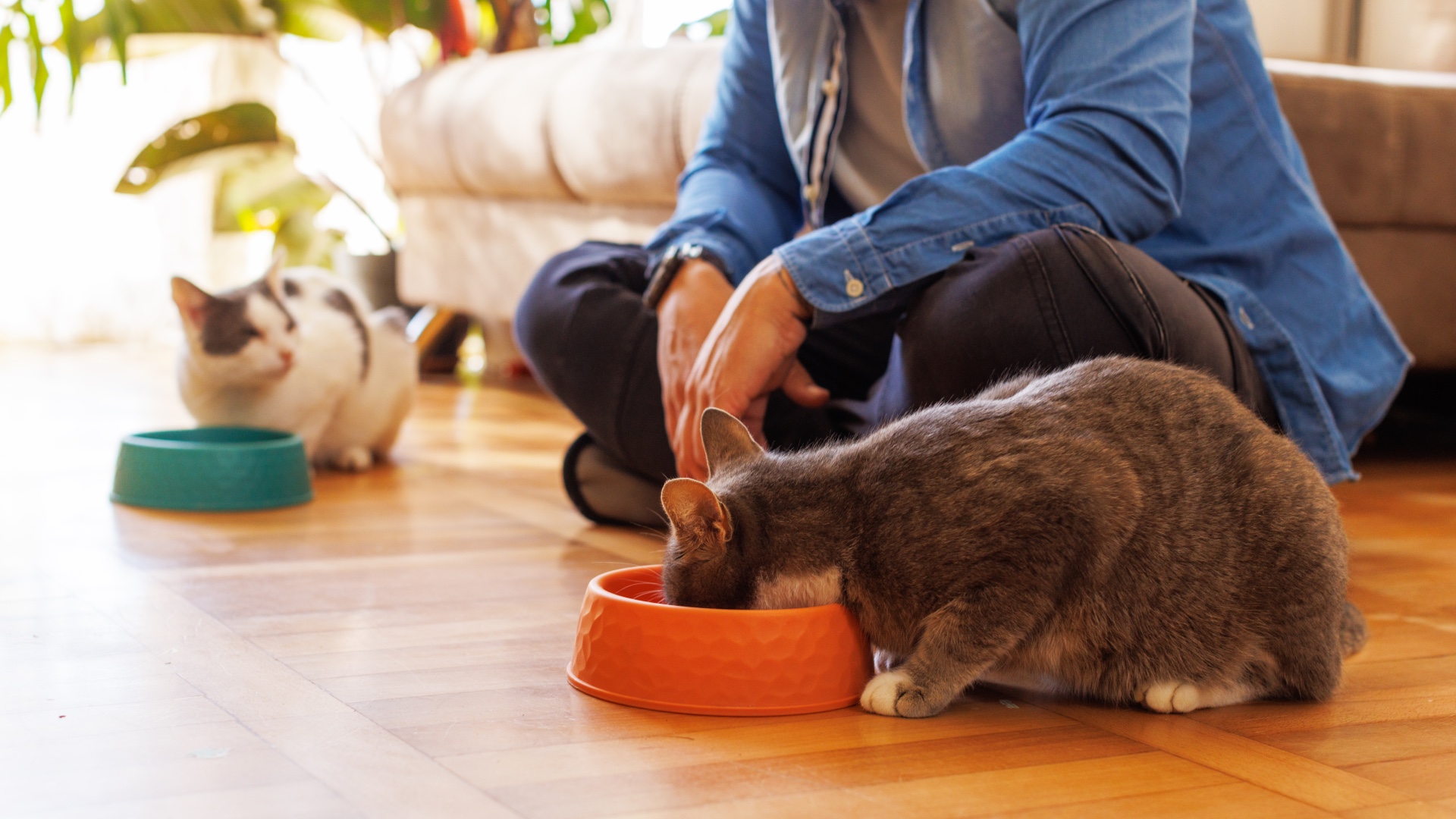
Teddy is a huge foodie, so her favorite times of day are when her breakfast and dinner get put down. In fact, she loves food so much that she'll think nothing of gobbling up her portion before shoving Roxy out of the way in an attempt to eat hers. Whether it's cat food or dog food that you're serving up, it can be well worth feeding your pets separately so they can each enjoy their meal. We did this for a long time and unless both cats are around when it's time to feed them and I'm there to supervise the meal, I'll still lock Teddy out of the room when Roxy is eating.
12. Use calming aids

Some pet owners find calming aids can be useful in helping pets adjust to one another. Things like the Feliway for cats or Adaptil for dogs can be a good choice as these mimic familiar calming pheromones that can help pets feel more relaxed and at ease.
13. Supervise their interactions
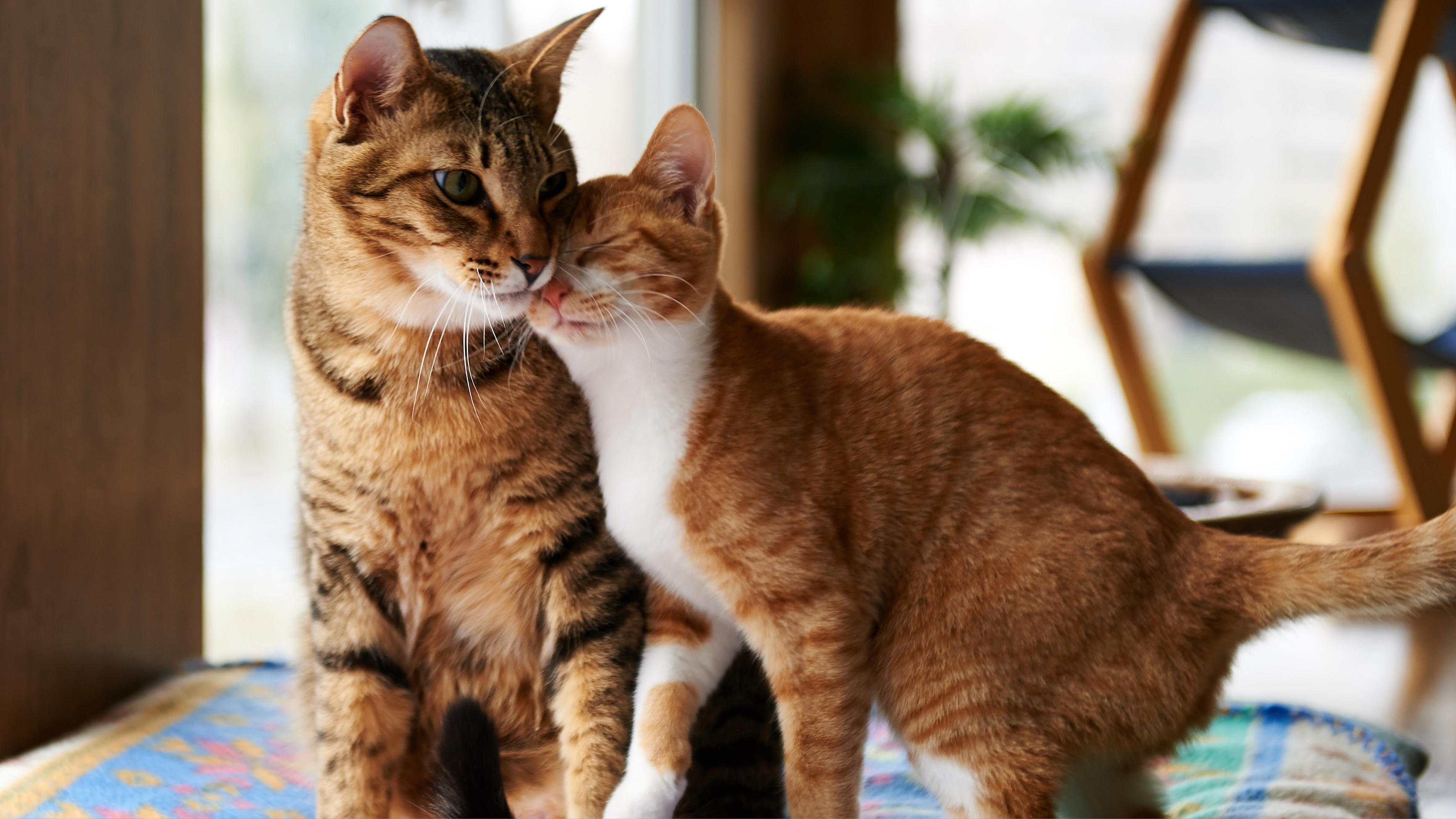
When introducing a new pet into a home where there is already an existing pet, it's very important that you supervise all interactions until you're confident that your pets can get along. Even now that we're almost four months down the line, I still supervise Roxy and Teddy at times when I know there's an increased chance of a scuffle – such as mealtimes and when Teddy is particularly energetic and likely to annoy a sleeping Roxy.
14. Separate them during periods of stress

Stress and anxiety in cats and dogs are more common than you might think – and the chance of them experiencing stress goes up if their humans are also stressed. If you know your pets tend to fight when there's a change of upheaval going on in their environment, try to keep them separated until this is over.
Likewise, if things are settled at home but your pets have a physical fight over a resource or because one of them wants to sleep and the other wants to play, separate them for a time to give both a chance to calm down.
15. Limit high-arousal play

Yes, physical exercise is vital for your pet's health and wellbeing, but high-arousal play increases the chance of conflict. Keep joint play sessions short (no more than 10 minutes) and make sure to wind these down properly so that your pets don't stay in a wound up state. If one pet starts getting the zoomies or is darting about all over the place, put them in a room where there are no other pets present until they are settled and quiet.
16. Establish a bedtime routine

Creating a solid bedtime routine (or sticking with an existing one) can be so helpful in multi-pet households. Feeding your pets and spending a bit of time playing with will make sure their needs are met before you settle them for the night. As an added bonus, this often increases the chances that they'll sleep through the night, which means not having to deal with a 4am wake up call!
17. Don't raise your voice

While it can be tempting to raise your voice if you find your pets fighting or not behaving in the way you'd like, always do your best to keep your tone calm. Yelling at pets never makes things better and it can actually worsen conflict between animals and create long-term tension. Plus, it can damage the bond you share with them, which you definitely don't want.
18. Consider your own safety first

If a fight breaks out between your pets, don't attempt to break it up using your hands as you may find you accidentally get scratched or bitten. Instead, place a physical barrier between your pets or briefly throw a blanket over one pet to get them to separate. After any fight, always put your pets in different rooms to give them a chance to calm down and destress before slowly reintroducing them.
19. Make sure they're getting enough physical stimulation

Pets that are have had their physical and mental needs met are far less likely to be in conflict with each other than those who haven't. If you're looking for new ways to build more fun into your dog's routine, try games such as hide-and-seek, scent work, or even a doggy agility course. For great games to play with cats, simple things like a feather teaser wand are often a huge hit, but some breeds love a good game of fetch or a walk, too!
20. Don't forget about mental enrichment

Alongside physical exercise, it's also important to tire your pet out mentally as this will help prevent behaviors that often come about as a result of being idle – such as fighting, scratching furniture, and chewing.
Brain games for dogs and cats are wonderfully enriching and alongside reducing frustration and boredom, they can also a good way of encouraging independent play and keeping your pet's brain firing on all cylinders.
21. Be patient
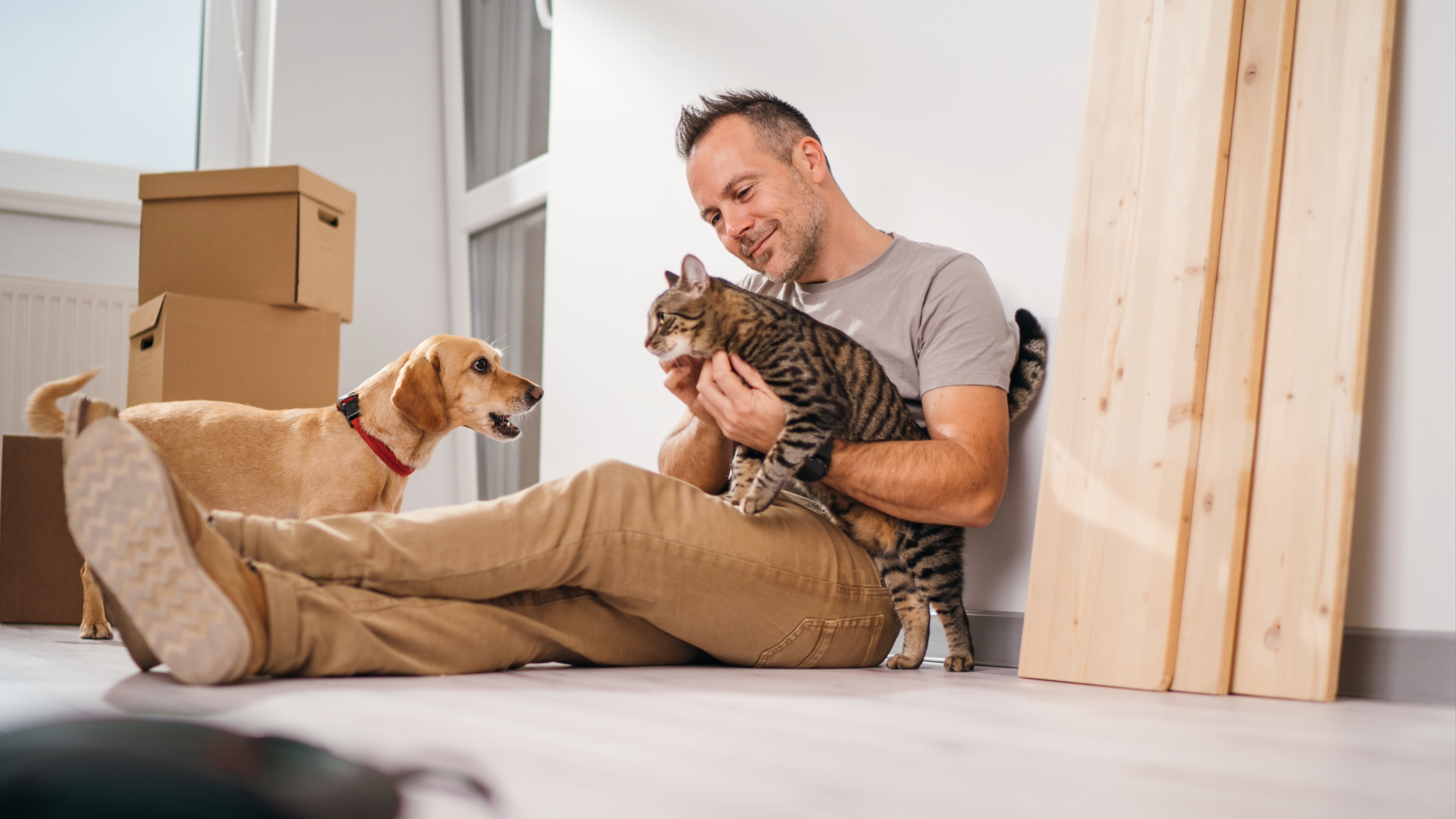
When we welcome another pet into our family, it's understandable that we want our existing pets to love this new addition as much as we do – but that's often not what happens. Cats and dogs are highly territorial and it can be a big adjustment to have to share their home with another ball of fluff. It's important that we humans are patient with our pets and come to terms with the fact that it may take longer than we'd like to create a harmonious household.
22. Use a baby gate
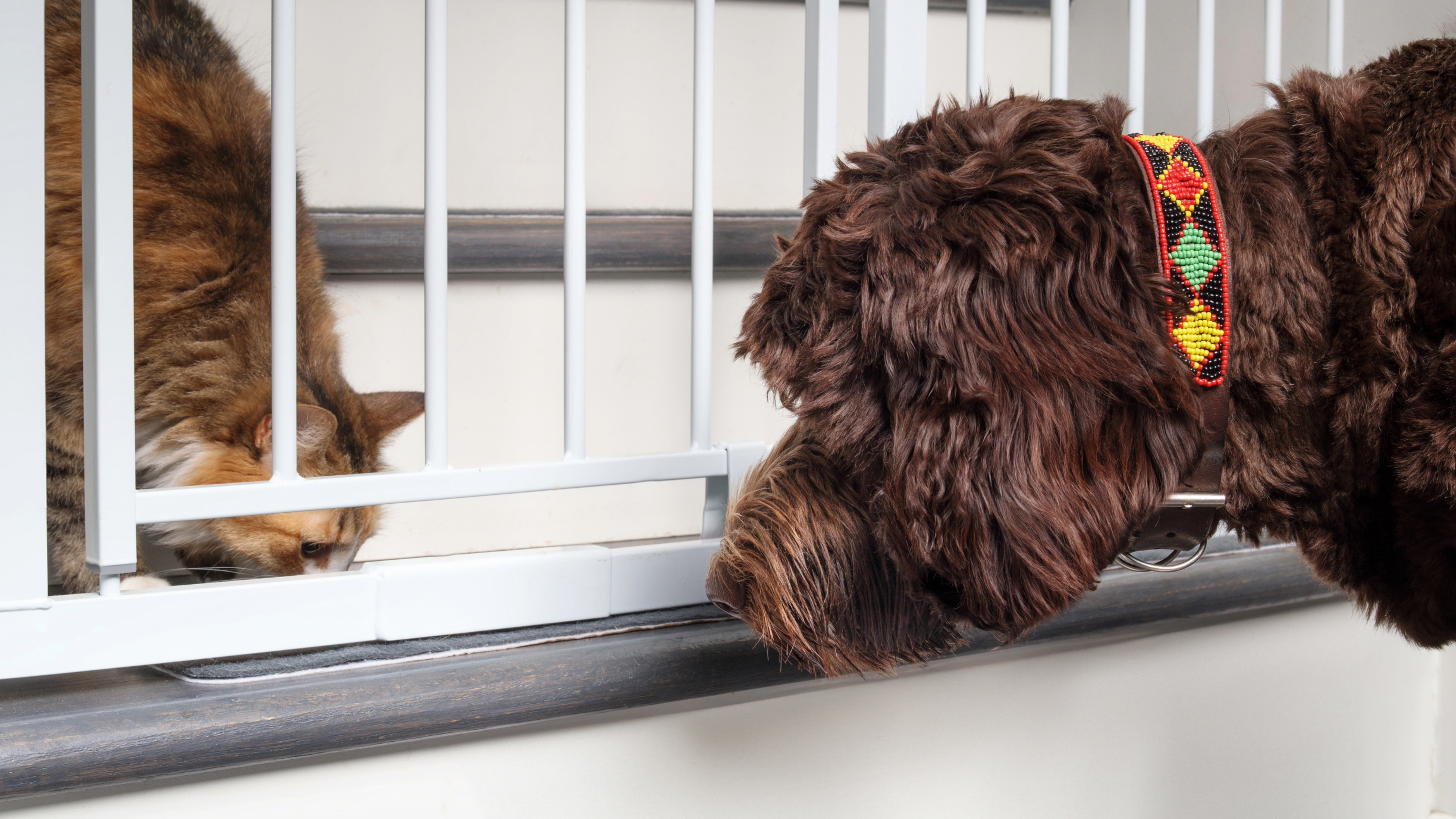
Baby gates can be really useful when you move from a single to a multi-pet household – and not just for the initial introductions. There are going to be times when your fur friends may need to be separated and baby gates can make this process a lot easier to manage.
23. Don't force your pets to bond
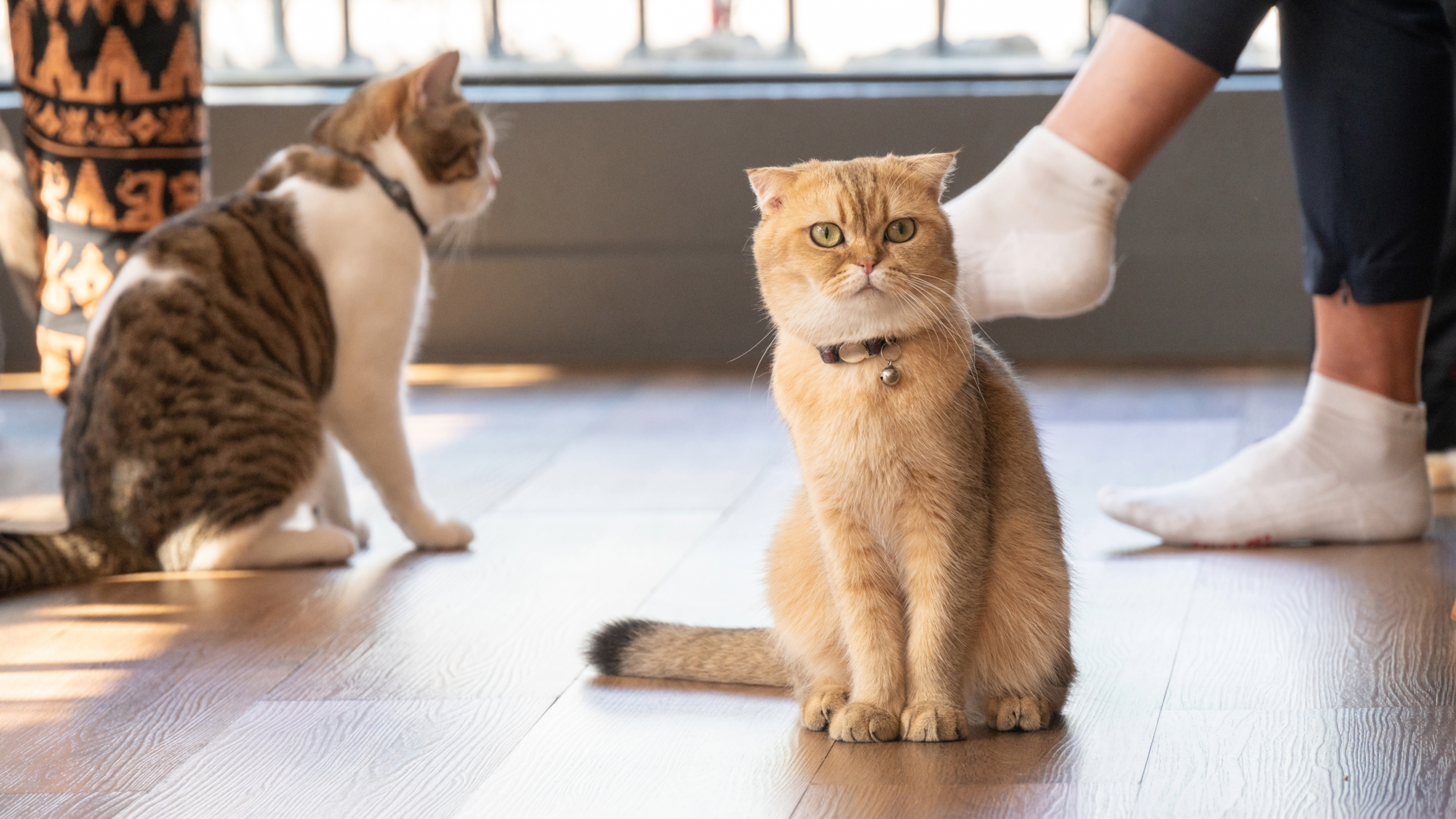
Obviously I'd hoped that Roxy and Teddy would bond, that's what most pet parents want when they welcome a new fur friend into the family. But the reality is that while they are learning to tolerate one another and can share space peacefully 90% of the time now, I wouldn't call them friends.
We've been very careful to not force them to bond with one another as we felt that could backfire and cause them to like each other even less. Instead, we followed all the guidelines around introducing new pets to give them the best chance of success and are letting their relationship slowly evolve from there.
24. Have a regular cleaning routine

Because most dogs and cats are not overly keen on sharing their home with another animal, it's important to ensure the spaces they're going to all be using are as clean as possible. Make sure litter boxes are emptied daily, shared water bowls are washed, dirt and debris is removed from high traffic areas and surfaces where pets frequently rest or play are wiped down regularly.
25. Use lots of positive reinforcement

It's so easy to tell our pets off when they do something we don't like, but positive reinforcement for dogs and cats is so much more effective when it comes to correcting behavior. By focusing on the things your pets are doing right, you increase the likelihood that they'll repeat those behaviors.
26. Manage different life stages

When welcoming a new bundle of fluff into your family, it's important to consider the age and stage of your existing pets and how this will impact the household dynamic. For example, taking care of senior dogs is very different from kitten care with most older animals wanting to slow down and relax and most younger animals wanting to zoom about all over the place.
We adopted Teddy when Roxy turned four because we felt she was still young enough to cope with having another cat around and we chose Teddy because British Shorthairs are known for their calmer temperament. Granted, it's not been completely smooth sailing but I believe carefully considering these things has helped make the transition easier.
27. Pet proof your house
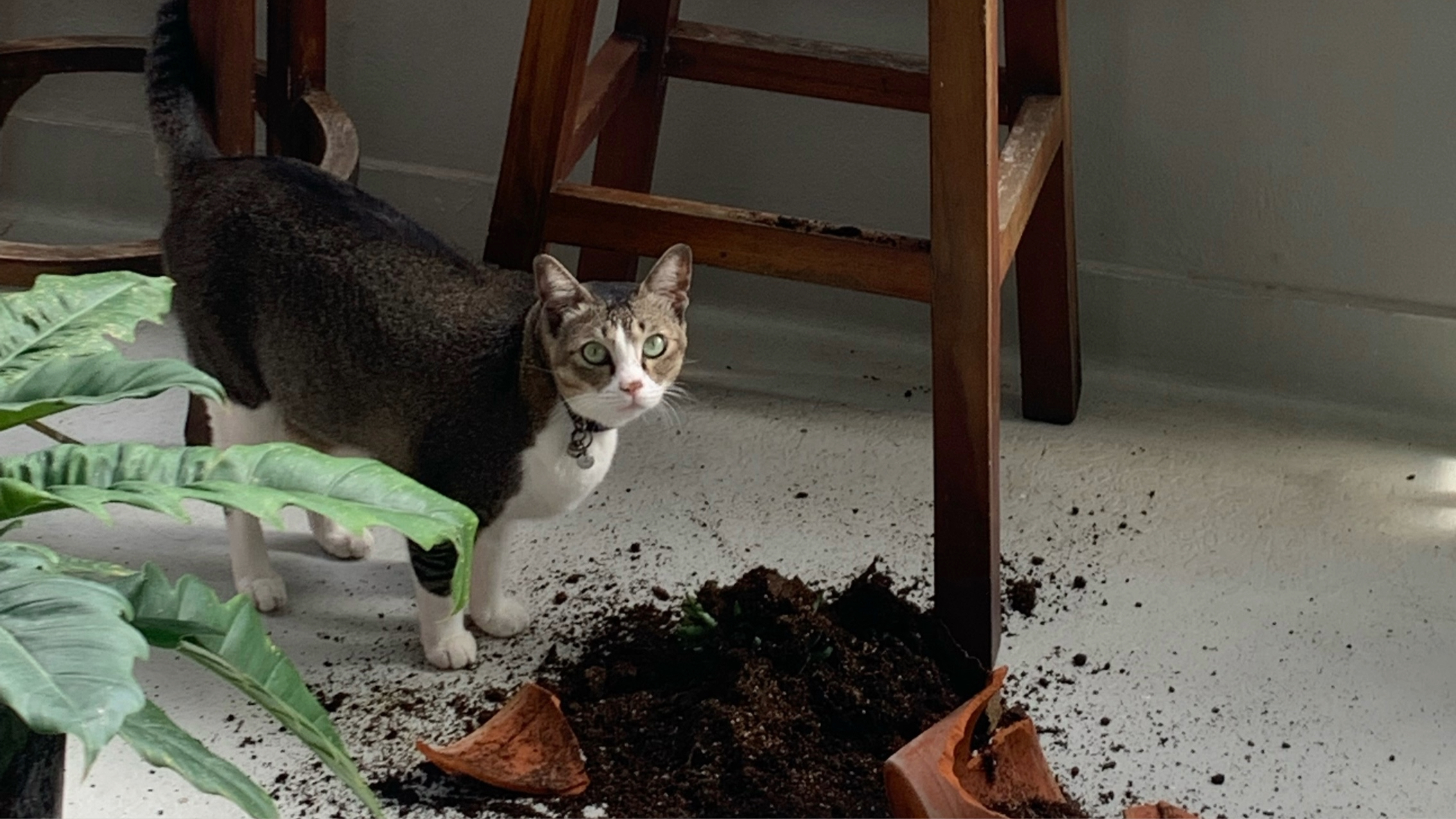
This is especially important if you're adopting a kitten or a puppy, but regardless of their age, all pets can benefit from living in a home that's been pet-proofed. Keep electrical cords out of reach, hide or remove toxic plants and cleaning supplies, keep garbage bins securely closed, toilet lids down and put away human foods that are toxic to dogs and cats. A harmonious, multi-pet household begins by creating a safe and comfortable environment.
28. Recognize stress signals

Stress and anxiety in dogs can manifest in different ways but some common signs to be on the lookout for are things like panting, drooling, soiling in the house, being extra clingy, barking, stiffening their body, and repetitive behaviors such as licking.
Cats will also have their own ways of showing stress and anxiety with some choosing to hide away and others overgrooming. You may also notice that they toilet outside of their litter box or start to behave aggressively. Being aware of these signs can help you to better support your pet.
29. Always break up fights

Never ever leave your pets to fight it out – this rarely solves anything and in actual fact, it just increases the chance that more fights will break out in the future.
30. Maintain health and hygiene

While parasite prevention is always important when it comes to your fur friend's health and well-being, it's particularly crucial in multi-pet homes — especially if one pet has access to the outdoors and the other one doesn't as they can bring back hitchhikers that could cause a lot of damage. Always treat your fur friend with one of the best flea treatments for dogs or a flea treatment for cats. As well as parasite prevention, make sure you also keep on top of vaccinations and routine check-ups.
31. Speak to a behaviorist

Sometimes all the hard work in the world on your part just isn't enough to help smooth the waters if a new arrival comes to town. In instances like these, where negative behaviors are continuing to happen in spite of all of your best efforts, it's worth speaking to a qualified behaviorist. They'll be able to offer advice and guidance on how to resolve conflicts and foster a peaceful environment in your home.
32. Consult your vet

Pets not getting along can sometimes be caused by an underlying health issue. If you're at all concerned that this may be the reason that one of your fur friends is struggling to accept the other, please consult with your vet who will be able to give both pets a full medical check-up.







